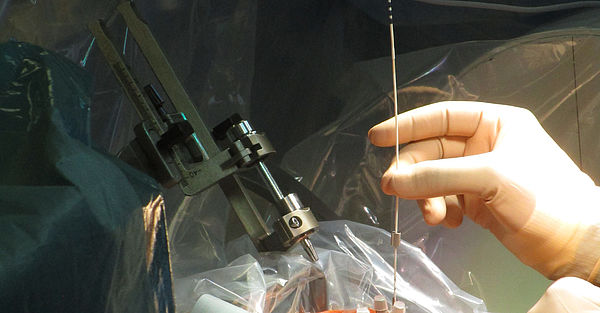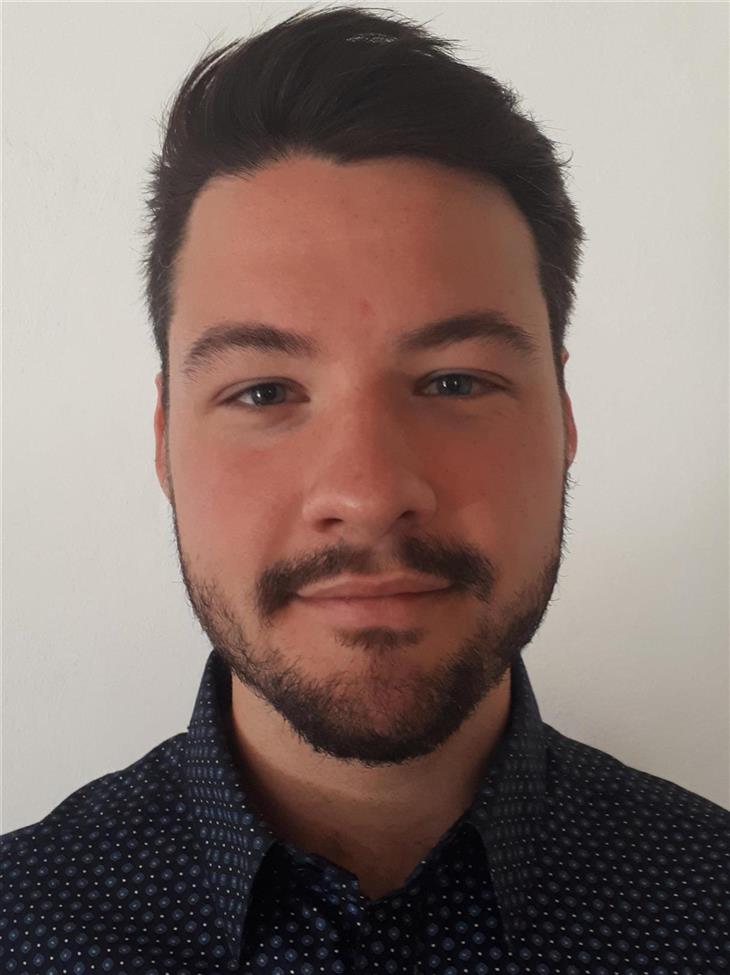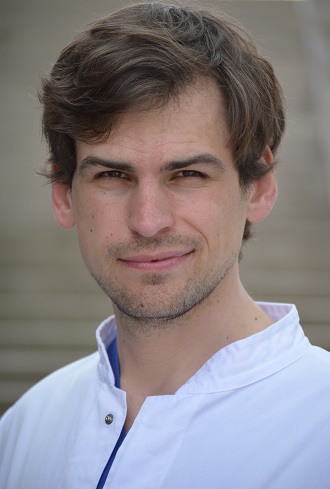

The goal of the Helfrich lab is to unravel the neural network mechanisms supporting higher cognitive functions and their disturbances underlying neuropsychiatric disorders. We study the functional architecture of human cognition with a spatiotemporal resolution spanning single units to large-scale network activity. In particular, we seek to understand context-dependent, goal-directed behavior in humans through the study of neural network dynamics with a particular emphasis on prefrontal cortex (PFC) physiology. The key hypothesis is that context dependent endogenous brain activity shapes cognitive processing in different cortical states, i.e. wakefulness or sleep. A core interest is the systematic investigation of the functional network architecture of cortico-cortical and subcortico-cortical interactions supporting cognitive processes such as attention and memory and their impairment in healthy aging and neurodegenerative diseases.
Currently, much of our understanding of the neural basis of cognition stems from invasive primate recordings or non-invasive recordings in humans. The limited spatiotemporal resolution of non-invasive imaging hampers scientific progress in our understanding of health and disease. Human intracranial electrophysiology has the promise of significant insights into the neural mechanisms that guide behavior. Several clinical procedures provide the unique opportunity to record directly from the human brain at the single neuron or population level. A key goal of our lab is to bridge the gap between different imaging modalities in different species. Translationally, we integrate cognitive and clinical neurophysiology to increase our understanding of cognitive decline and reduced arousal levels such as sleep, anesthesia and coma.
If you are interested in a Bachelor, Master or PhD thesis in the lab, please send an email stating your research interests and your CV to randolph.helfrichmed.uni-tuebingen.de or check the section "Open positions" below.
Find out more: www.helfrich-lab.com
Google Scholar Profile: scholar.google.de/citations
Twitter: twitter.com/HelfrichLab
I. Rhythmic building blocks of human attention: How network oscillations link perception and action.
Attention is a fundamental cognitive function necessary to efficiently translate sensory experiences into goal-directed actions . Traditionally, attention has been conceptualized as a constant spotlight that amplifies behaviorally-relevant information. Recently, several lines of inquiry probing attention on a fine-grained temporal scale revealed frequency-specific behavioral fluctuations that align with ongoing brain oscillations, indicating that attention is a discrete process. Our aim is to understand the structural and functional basis as well as the physiologic purpose of attentional rhythmic fluctuations.
See also: Helfrich et al. (2018b) Neuron, Helfrich et al. (2019) Current Opinion in Psychology
II. Context-dependent predictive processing in human prefrontal cortex.
Over the last few decades, several lines of research indicated that the prefrontal cortex (PFC) provides the structural basis for goal-directed behavior based on endogenous predictions, but its functional architecture is not well understood. Our goal is to investigate how predictions are implemented in the human brain to optimize sensory processing and goal-directed behavior.
Background reading Helfrich and Knight (2016) Trends in Cognitive Sciences; Helfrich et al. (2017) PNAS, Weber et al. (2022) bioRxiv preprint
III. (Patho-) Physiology of human memory networks during wakefulness and sleep
Hippocampus-Prefrontal interactions are central to memory formation in the human brain. Critically, this network also constitutes a predilection site for various pathological entities that are associated with memory deficits. Our goal is to further dissect and understand the network circuitry underlying memory disorders in various patient populations (epilepsy, stroke and degenerative diseases)
Additional information: Helfrich et al. (2018a) Neuron; Hahn et al. (2020) eLife; Helfrich et al. (2021) Trends in Cognitive Sciences; Hahn et al. (2022) eLife; Lendner et al. (2022) bioRxiv preprint
IV. Principles of neuronal network organization in the sleeping and the unconscious (anesthesia, coma) brain.
How do different network states impact different behavioral states? Understanding principles of network organization is critical to understand disorders of consciousness. We will work with several patient populations to understand large-scale network mechanisms underlying reduced arousal states.
See also Helfrich et al. (2019) Nature Communications; Lendner, Helfrich et al. (2020) eLife
We currently have no formal openings. Informal inquiries can be addressed to
randolph.helfrich@med.uni-tuebingen.de
Please also see our website www.helfrich-lab.com
Key publications
2023
Raposo I, Szczepanski SM, Haaland K, Endestad T, Solbakk AK, Knight RT, Helfrich RF (2023) Periodic attention deficits after frontoparietal lesions provide causal evidence for rhythmic attentional sampling. Current Biology
Lendner JD, Niethard N, Mander BA, van Schalkwijk FJ, Schuh-Hofer S, Schmidt H, Knight RT, Born J, Walker MP, Lin JJ, Helfrich RF (2023) Human REM sleep recalibrates neural activity in support of memory formation. Science Advances
Weber J, Iwama G, Solbakk AK, Blenkmann AO, Larsson PG, Ivanovic J, Knight RT, Endestad T, Helfrich RF (2023) Subspace partitioning in human prefrontal cortex resolves cognitive interference. Proc Natl Acad Sci U S A.
van Schalkwijk FJ, Weber J, Hahn MA, Lendner JD, Inostroza M, Lin JJ, Helfrich RF (2023) An evolutionary conserved division-of-labor between hippocampal and neocortical sharp-wave ripples organizes information transfer during sleep. Prog Neurobiol.
2022
Weber J, Solbakk AK, Blenkmann AO, Llorens A, Funderud I, Leske S, Larsson PG, Ivanovic J, Knight RT, Endestad T, Helfrich RF (2022) Population coding and oscillatory subspace synchronization integrate context into actions. (preprinted on the bioRxiv; under review)
Hahn MA, Bothe K, Heib D, Schabus M, Helfrich RF, Hoedlmoser K (2022) Slow oscillation-spindle coupling strength predicts real-life gross-motor learning in adolescents and adults. Elife
2021
Helfrich RF, Lendner JD, Knight RT (2021) Aperiodic sleep networks promote memory consolidation. Trends Cogn Sci
2020
Lendner JD, Helfrich RF, Mander BA, Romundstad L, Lin JJ, Walker MP, Larsson PG, Knight RT (2020) An electrophysiological marker of arousal level in humans. Elife
Hahn MA, Heib D, Schabus M, Hoedlmoser K, Helfrich RF (2020) Slow oscillation-spindle coupling predicts enhanced memory formation from childhood to adolescence. Elife
2019
Helfrich RF, Lendner JD, Mander BA, Guillen H, Paff M, Mnatsakanyan L, Vadera S, Walker MP, Lin JJ, Knight RT (2019) Bidirectional prefrontal-hippocampal dynamics organize information transfer during sleep in humans. Nature Communications
2018
Helfrich, RF, Fiebelkorn, IC, Szczepanski, SM, Lin, JJ, Parvizi, J, Knight, RT, and Kastner, S (2018b). Neural Mechanisms of Sustained Attention Are Rhythmic. Neuron
Helfrich, RF, Mander, BA, Jagust, WJ, Knight, RT, and Walker, MP (2018a). Old Brains Come Uncoupled in Sleep: Slow Wave-Spindle Synchrony, Brain Atrophy, and Forgetting. Neuron
2017
Helfrich, R.F., Huang, M., Wilson, G., and Knight, R.T. (2017). Prefrontal cortex modulates posterior alpha oscillations during top-down guided visual perception. PNAS
2016
Helfrich, R.F., and Knight, R.T. (2016). Oscillatory Dynamics of Prefrontal Cognitive Control. Trends in Cognitive Sciences
Link: https://pubmed.ncbi.nlm.nih.gov/?term=helfrich+randolph

Hertie Center of Neurology
Hertie Institute for Clinical Brain Research
Hoppe-Seyler-Str. 3
72076 Tübingen
Phone: +49 (0)7071 29-80442











